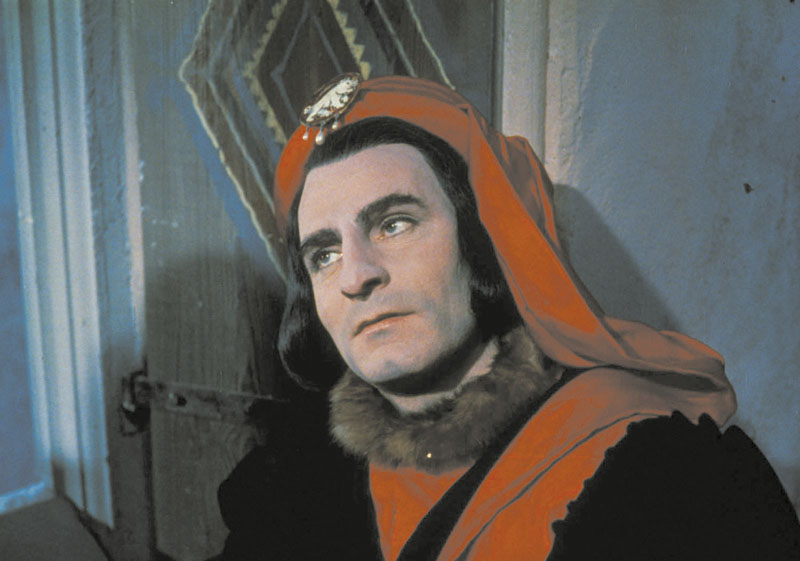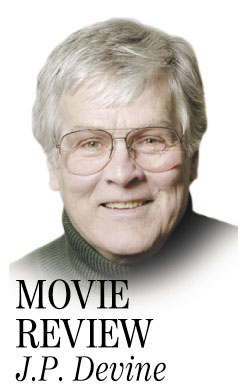“Since I cannot prove a lover, I am determined to prove a villain.”
— Richard III
Booking Laurence Olivier’s 1956 film production of “Richard III” was a smart move by this year’s Maine International Film Festival. Not just because it’s a great film, but for news from Britain that stunned the world.
Originally I wrote that “Fans of Olivier, of theater and Shakespeare are in for a long buried treat.” I didn’t intend that as a pun, but now this year, the long buried Richard himself seems to have been unearthed in London from the ground of a medieval church in Leicester.
They’ve even done hi-tech images of his wounds suffered at that infamous Battle of Bosworth: a large hole in the skull, caused by an ax or sword, and a barbed arrowhead in the skeleton’s spine. In viewing Olivier’s spectacularly filmed slaughter of Richard at the Bosworth battle, that’s pretty much how it went down. At least for Sir Larry.
Olivier has performed Richard many times as the famous “deformed” king, but he plays down the description he gives himself, “Cheated of feature by dissembling nature … deformed, unfinished … so lamely and fashionable that dogs bark at me as I halt by them.”
Even as Olivier recites these lines, he seems to sprint about the stage with only a slight hump and a faint limp that was really his, from an accident while filming the battle scene in Spain.
The only deformity he bears in this, his beautifully produced and directed epic, is the almost comic nose he affects, (and maybe the lavish Prince Valiant black locks.) It’s a real honker, and in the steamy love scenes with Ann (a luscious Claire Bloom) it looks dangerous.
But in his close-ups, when he leers into the camera as he reveals his plot to murder and purloin the crown, Olivier’s eyes sparkle with a genuine, and almost sensuous, madness. I’ve seen Olivier in similar scenes in the theater, where he conveyed such evil with only that magnificent voice. Given Technicolor and the close-ups, it’s dynamic and chilling. He struts about with that one shoulder heaved high, waving one arm about while toying with his sword handle with the crippled fingers of his hand.
OK, it’s high camp, but when high camp is performed by a camp master (see his Archie Rice in “The Entertainer”) it’s masterwork.
Olivier as director smartly surrounds himself with only the very best in British theater, and they all seem to knock themselves out in competing with one another for Best Supporting Actor.
John Gielgud as Clarence, Ralph Richardson as Buckingham, and Alec Clunes as Hastings fill the screen with powerful moments. Claire Bloom has all of those great early lamentation scenes over the corpse of her husband, and wrings every last tear from them.
The murder of Clarence in the tower rivals anything done in modern film. Spoiler alert: He’s stabbed, hacked and then stuffed into a huge barrel of wine. A side thought: Has anyone thought to look for Jimmy Hoffa at Francis Coppola’s winery?
Fans, and there are many, of the last hurrahs of the great British studio films will love seeing Mary Kerridge as Queen Elizabeth. And oh my: there’s Michael Gough, who will go on to play the butler Alfred Pennyworth in Tim Burton’s two Batman movies, and the great Stanley Baker as Henry, Earl of Richmond.
A great deal of praise has to be given to cinematographer Otto Heller, who, lest we forget, filmed “The Lady Killers,” and Michael Caine’s “Alfie.”
Laurence Olivier’s “Richard III,” with all of its high camp and flourishes, will haunt your children’s dreams. Bring them along.
J.P. Devine, of Waterville, is a former stage and screen actor.
Send questions/comments to the editors.




Success. Please wait for the page to reload. If the page does not reload within 5 seconds, please refresh the page.
Enter your email and password to access comments.
Hi, to comment on stories you must . This profile is in addition to your subscription and website login.
Already have a commenting profile? .
Invalid username/password.
Please check your email to confirm and complete your registration.
Only subscribers are eligible to post comments. Please subscribe or login first for digital access. Here’s why.
Use the form below to reset your password. When you've submitted your account email, we will send an email with a reset code.